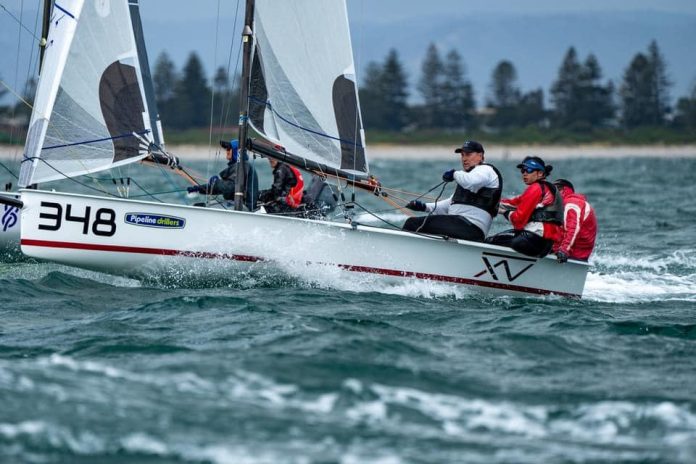

Many sailors have poor gust and lull response but if we want to be successful it is something that we must master.
When hiking in gusts, there is a tendency to “fight” the boat and to use too much steering to control power. The boat heels, we pinch and use over-corrective steering. These factors lead to reduced speed and reduced VMG.
Conversely, in lulls, even experienced sailors tend to chase apparent wind around killing VMG and inadvertently, slowing the boat.
Correct Gust Response
The right way to handle a gust is Ease – Hike – Trim.
When a gust comes on your boat and is from the same direction, the apparent wind immediately swings aft. To gain the maximum benefit we need to:
a) Keep the flow attached to the sail by initially easing and accelerating, then pointing up and trimming in.
b) Keep the boat flat by using the maximum amount of body leverage. When good pointing is because of good speed, the apparent wind comes forward and hiking is easier.
Better pointing is achieved through higher speeds first, not steering angle changes. The increased speed and flow over the sails and foils creates more lift which means less sideways force.
TIP: Don’t feather or pinch in the gusts as it also increases leeway.
Incorrect Gust Response
The wrong way to handle a gust is Pinch – Hike – Corrective Steer – Stall.
Because a gust drags the apparent wind aft it causes weather helm and the boat wants to naturally head up. If you don’t ease the sheet and hike, heel will be induced, helm will be increased and thus drag.
Correct Lull Response
The correct strategy when encountering a lull is to coast.
In a lull, apparent wind is dragged forward which is the opposite of a gust. keep the boat flat and if need be move your weight inboard.
Initially trim in to reduce drag but as you slow down be prepared to ease again as the apparent wind changes as speed drops.
SAILING TO WIN BOOK AND BONUSES
Incorrect Lull Response
The wrong way to handle a lull is to chase apparent wind.
If you chase the apparent wind, you’ll never find good flow because the apparent wind is all the way forward.
You could bear off 150 degrees and your windward telltales will still be luffing – but during that turn, you’re decreasing your apparent wind speed.
You’re also pointing further away from your intended goal and destroying VMG.






lots of good points. Are there points to be made regarding the amplitude of gusts and lulls? I get the ‘coast through’ a big lull where the apparent wind is hopelessly forward for a few seconds. but what if the wind goes from 15 to 12 or 10? is it wise to keep attached flow by bearing off a bit rather than just ‘coasting through’?
Spot on. In that case bear off slowly to keep the flow attached.